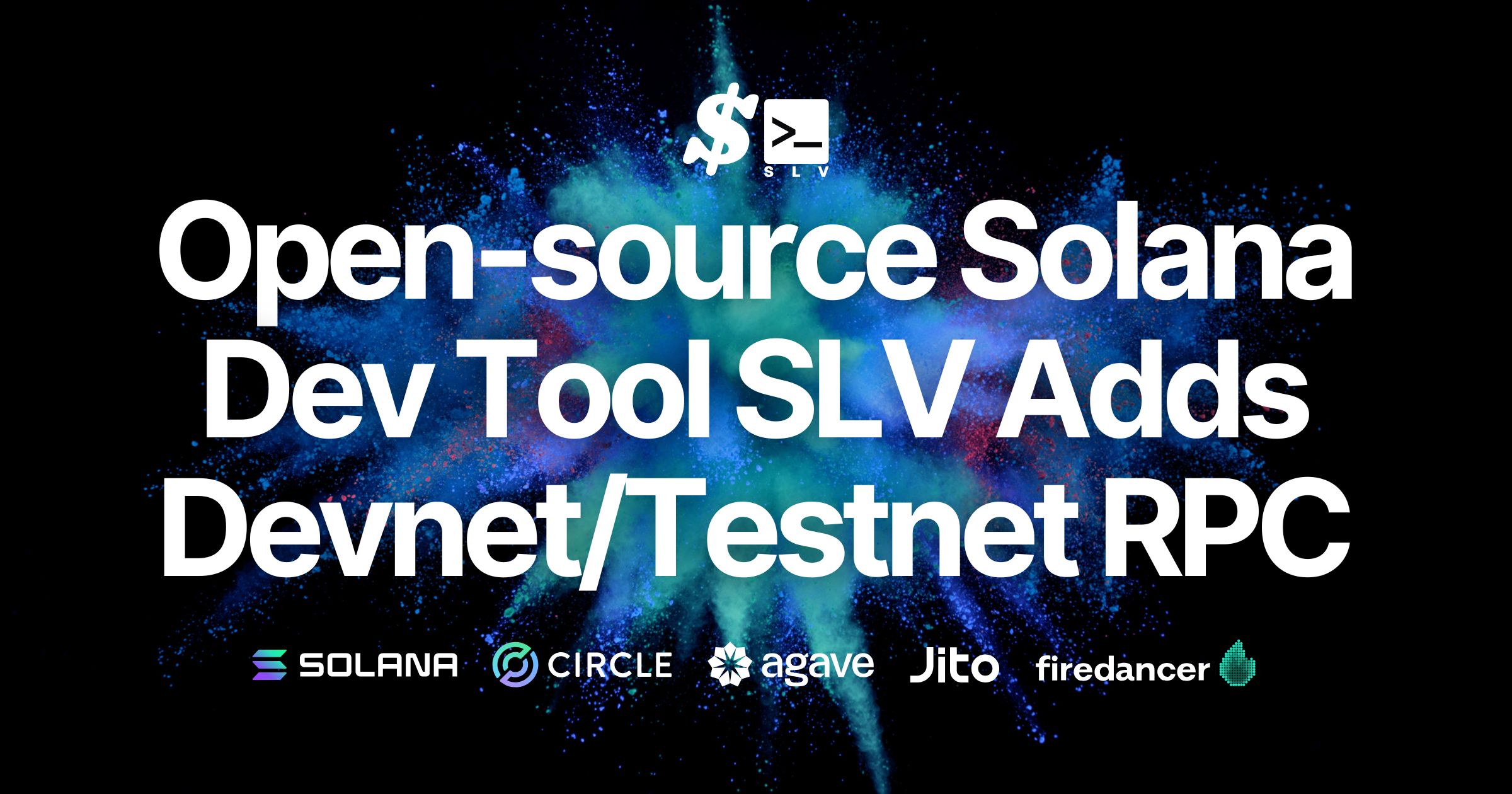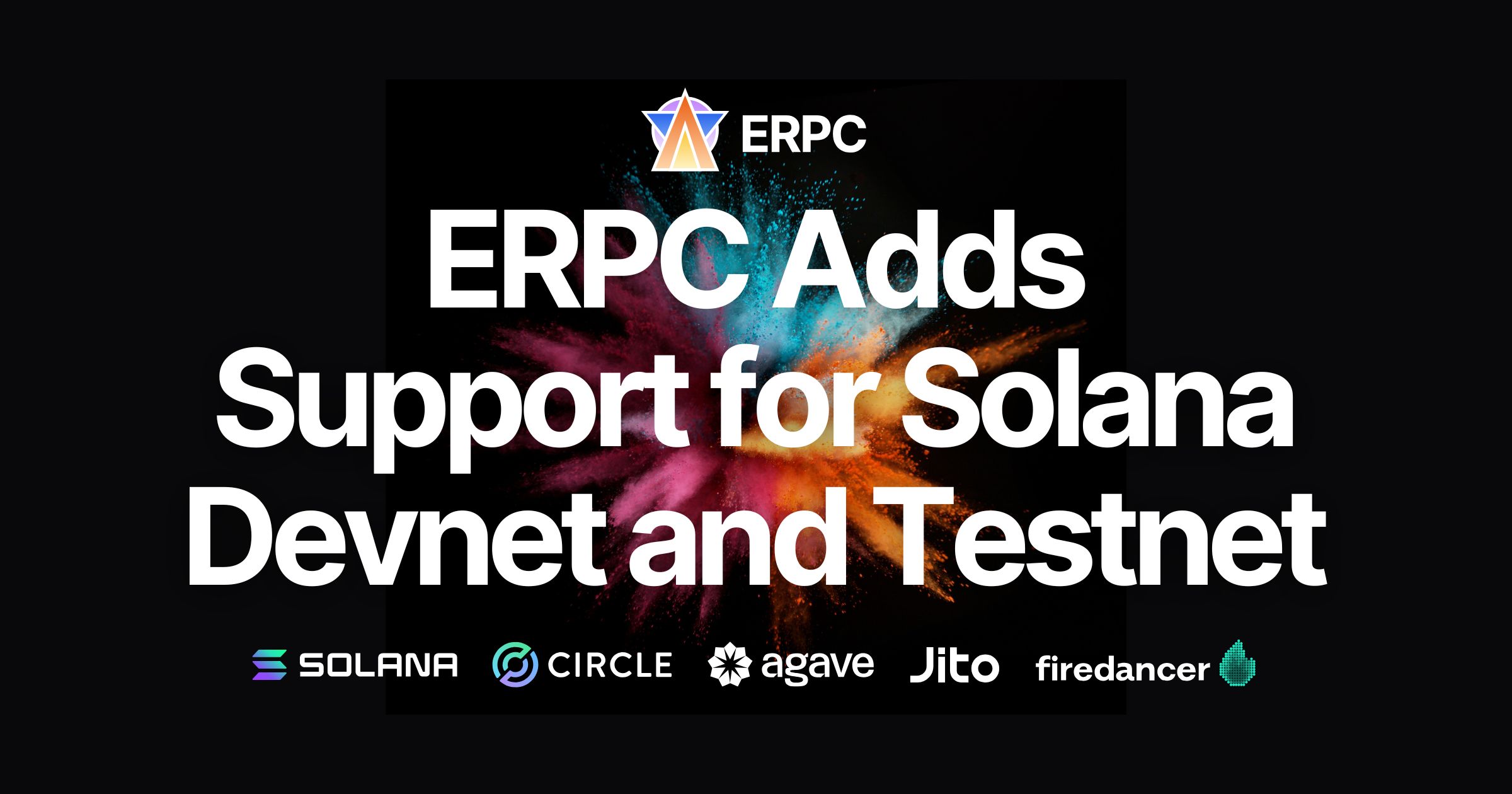ERPC Completes Major Upgrade of Solana Shared Endpoints — Ping-Based Auto-Routing and Enhanced Security Across All Regions, with Node Expansion in AMS and FRA
ERPC Completes Major Upgrade of Solana Shared Endpoints — Ping-Based Auto-Routing and Enhanced Security Across All Regions, with Node Expansion in AMS and FRA
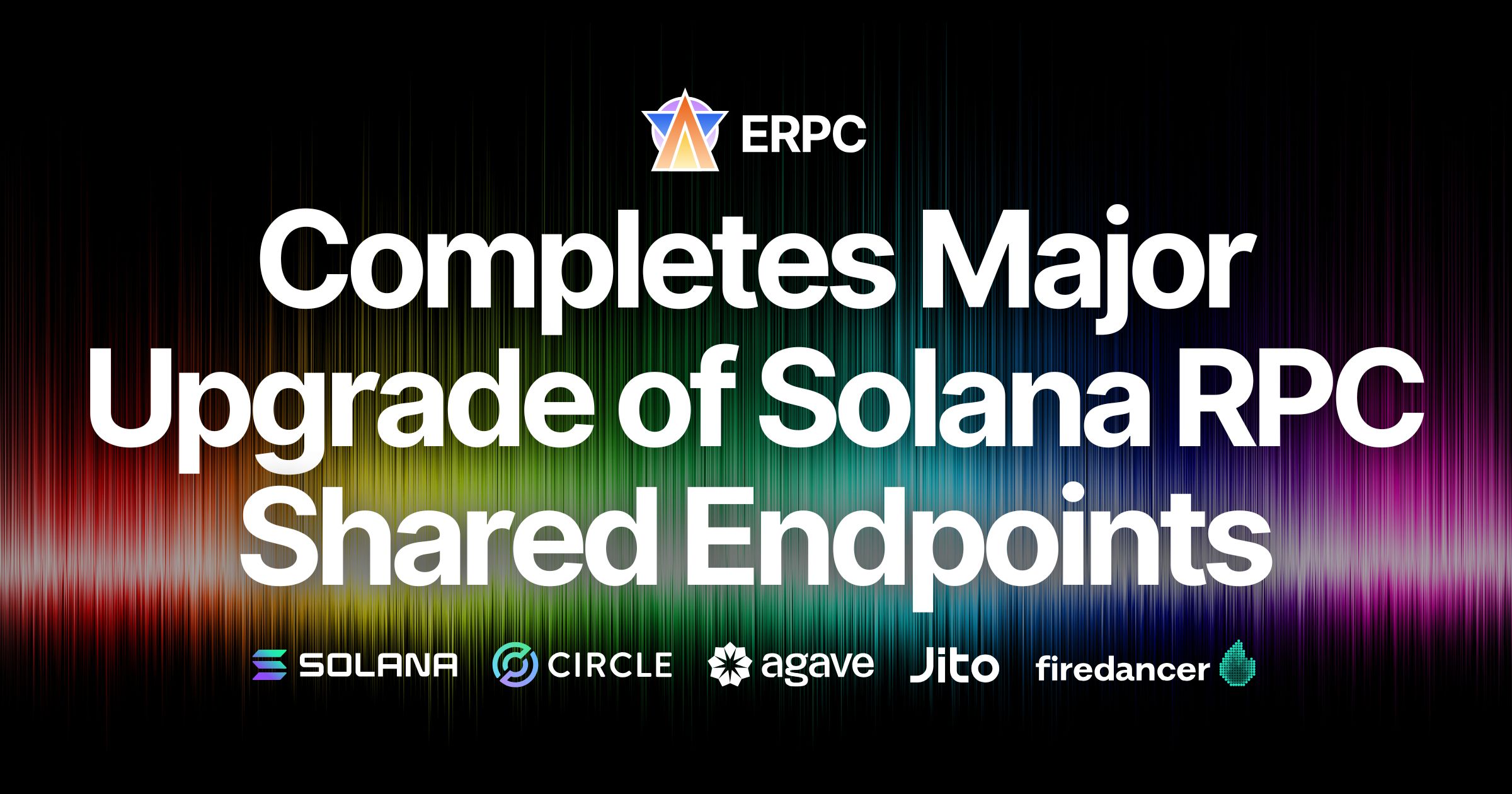
ELSOUL LABO B.V. (Headquarters: Amsterdam, The Netherlands; CEO: Fumitake Kawasaki) and Validators DAO have completed a comprehensive upgrade of ERPC’s Solana shared endpoints. This update introduces ping-based automatic routing and enhanced attack resistance across all regions, providing lower latency and higher stability for every connection method. In addition, shared nodes in the AMS and FRA regions have been expanded to further improve load balancing and communication stability.
Background
Previously, ERPC estimated the nearest region based on the IP address’s geographical information to automatically assign a connection destination. However, IP data often varies between vendors, contains inaccuracies or outdated records, and cannot reliably represent the actual network route.
Moreover, this method was based purely on physical distance, without considering the real network topology — such as cable paths or switch configurations. In many cases, two locations might appear geographically close but are separated by a much longer and more complex network route.
By contrast, ping latency reflects all of these network factors and provides a truly accurate measure of real-world distance.
With this upgrade, ERPC now performs automated ping measurements from each regional endpoint toward whitelisted IPs, aggregates the results globally, and determines the optimal route based on real latency data.
This new system completely replaces the previous IP-based logic, ensuring the most accurate and shortest network path for every user connection.
Details of the Upgrade
Ping-based automatic routing is now applied to all shared RPC, gRPC, and Shredstream endpoints. Each user is automatically connected to the region that provides the shortest and most stable network path. This upgrade improves regional load balancing, increases overall network efficiency, and enhances stability across all regions.
In AMS and FRA, additional shared nodes have been deployed to maintain consistent responsiveness even during high-traffic periods. The FRA region continues to work in close collaboration with the Epics DAO validator, utilizing stake-backed high-quality nodes to ensure superior reliability and throughput.
Security Reinforcement and Network Stability
To handle the increasing demand, ERPC has strengthened its nftables-based defense logic across all regions. The system automatically detects abnormal traffic or malicious access patterns and terminates affected connections before they can impact the network. These controls are designed to maintain a healthy and stable environment for all users.
The system does not permanently suspend accounts automatically. Instead, the Validators DAO team directly contacts the user via Discord to review the situation and provide improvement guidance. This operational policy protects the experience of all legitimate users and maintains transparency and fairness throughout the platform.
Network Efficiency and User Benefits
With ping-based routing, users are now automatically connected to the nearest region based on real network latency. On an individual level, this ensures faster communication through the shortest path, while on a global scale, it reduces the load from long-distance connections. The result is a more efficient, low-latency network where users worldwide can consistently experience stable and responsive Solana access.
Solana RPC Bundle Plan
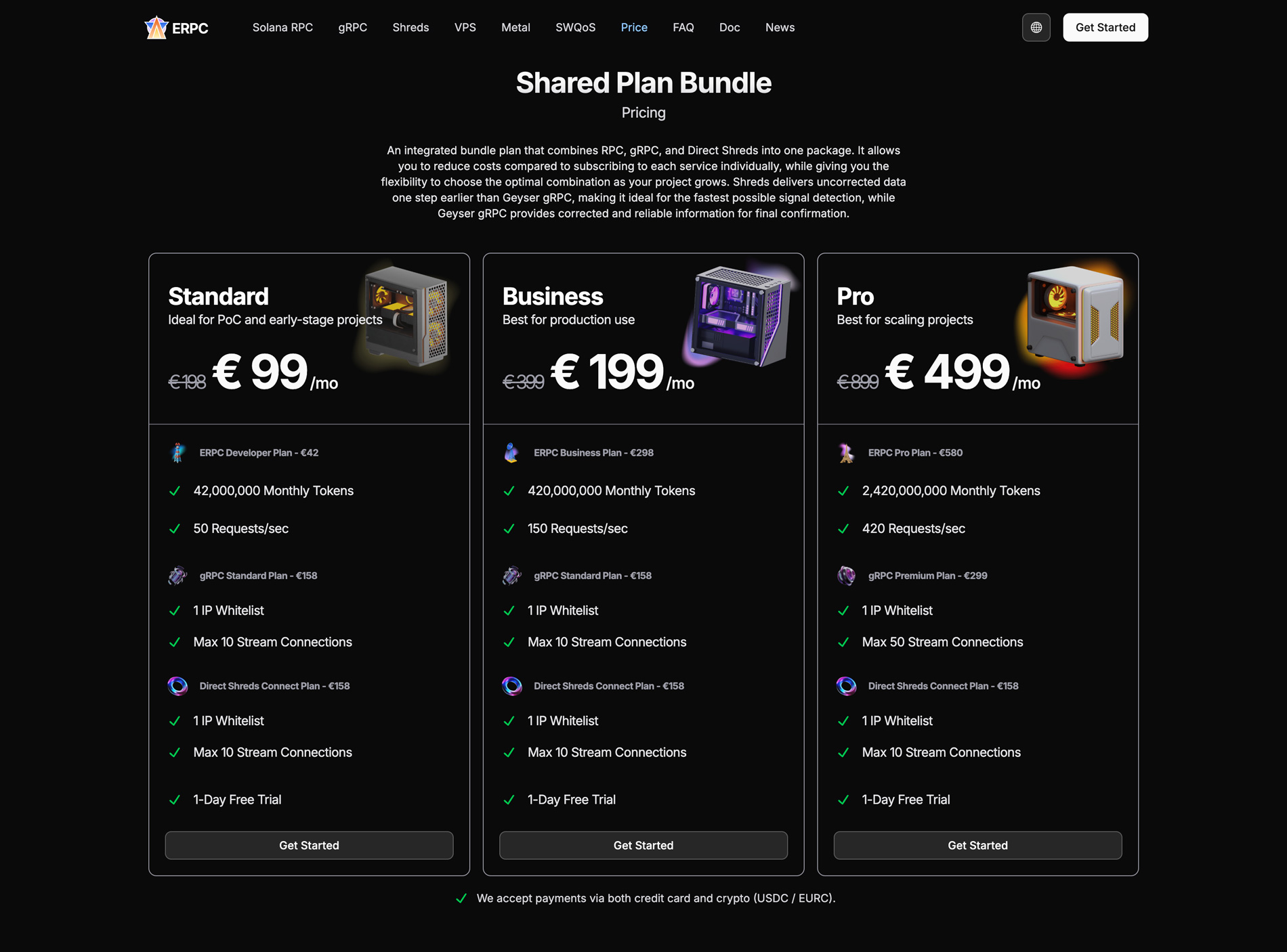
Most developers start by using Geyser gRPC to access Solana’s real-time data streams. Because the data is already decoded, it’s easier to use, with many existing examples and libraries available.
Professionals, however, move on to Shredstream, which provides much faster access to raw network data. Many teams continue to run their apps on gRPC while developing parallel systems to take advantage of Shreds. The Bundle Plan was designed to meet exactly this demand.
Until now, developers who wanted to experiment with faster data sources faced barriers in setup complexity and cost. The Bundle Plan eliminates those barriers — if you already use RPC and gRPC for production, Shredstream is included at a lower combined price. In fact, the total cost is often cheaper than using RPC and gRPC separately. This pricing model has made the plan extremely popular.
Many teams now use RPC + gRPC to rapidly build a base application and, within the same environment, begin experimenting with Shredstream for higher performance. Advanced developers go even further, building custom clients to process both processed and confirmed Shredstream data directly. The Bundle Plan provides the secure and reliable access path needed to take that next step.
Bundle gRPC connections have no filtering restrictions and fully support Devnet and Testnet during development. It is the ideal starting point for Solana development — flexible enough for testing, yet powerful enough to go directly into production with no architectural changes required.
For inquiries or migration assistance, please contact Validators DAO via the official Discord:
- Validators DAO Official Discord: https://discord.gg/C7ZQSrCkYR
Premium Ryzen VPS
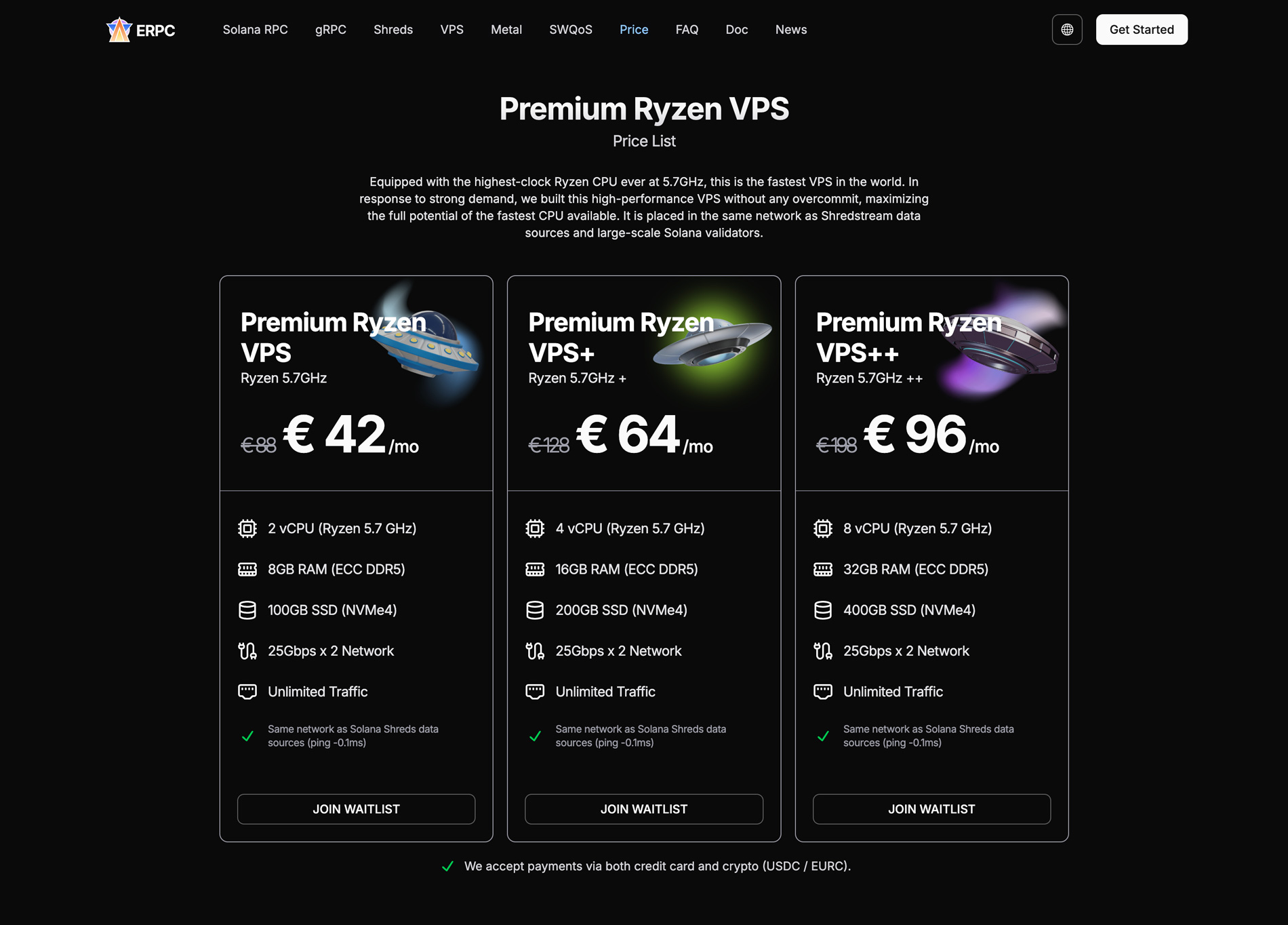
The Premium Ryzen VPS, running on the same network as ERPC, features world-class 5.7GHz high-clock CPUs, ECC DDR5 memory, NVMe4 storage, and dual 25Gbps network links. With a strict no-overcommitment policy, it delivers bare-metal–level performance even in a virtualized environment.
Located in the same data centers as major Solana validators and the Jito Shredstream infrastructure, it achieves near-zero network distance, eliminating latency caused by internet routing. This combination of raw performance and cost efficiency has made it a favorite among developers seeking production-grade Solana infrastructure.
- Validators DAO Official Discord: https://discord.gg/C7ZQSrCkYR
Challenges Solved by ERPC and Validators DAO
- Transaction failures and latency fluctuations common in standard RPC environments
- Performance throttling imposed by many infrastructure providers
- The significant impact of network distance on communication quality
- The difficulty small teams face in accessing high-quality infrastructure
Our journey began with Epics DAO, an open-source Solana NFT card game project. During its development, we faced the challenge of building a high-performance Solana environment that was both fast and accessible. To solve this, we built our own infrastructure and eventually launched ERPC and SLV based on that experience.
In mission-critical fields such as finance, latency and reliability directly affect the user experience. Solana’s distributed validator network and Web3-specific structures make it complex to manage and optimize, often leading to instability for developers.
By providing the high-performance infrastructure developers truly need, we aim to enhance both the development experience and the end-user experience across the entire Solana ecosystem. ERPC and SLV are key pillars of that mission.
- ERPC Official Website: https://erpc.global
- SLV Official Website: https://slv.dev
- Epics DAO Official Website: https://epics.dev
- Validators DAO Official Discord: https://discord.gg/C7ZQSrCkYR


